On January 31…
“If I hadn’t approved it – if I let Slovik accomplish his purpose – I don’t know how I could have gone up to the line and looked a good soldier in the face.”
~Maj. Gen. Norman Cota
Commander / 28th Infantry Division
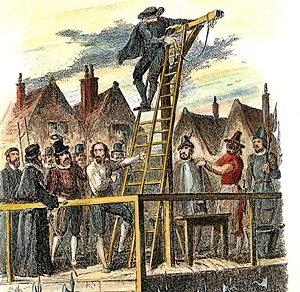
1606 – Guy Fawkes, convicted for his part in the Gunpowder Plot – which included seven additional conspirators – against the English Parliament and King James I was executed.
The plan was to blow up the House of Lords during the State Opening of Parliament on November 5, 1605, as the prelude to a popular revolt during which King James’s nine-year-old daughter, Elizabeth, was to be installed as the Catholic head of state.
The night before the planned bombing, Fawkes was discovered guarding 36 barrels of gunpowder – enough to reduce the House of Lords to rubble – and arrested.
At their trial on January 27, 1606, eight conspirators, including Fawkes, were convicted and sentenced to be hanged, drawn and quartered. Poetically, the executions took place directly opposite the building that the group was planning on destroying.
I will spare you the barbaric details of the executions, but Fawkes, the last to be hanged, managed to jump from the gallows and break his neck, thus avoiding the agony of the gruesome latter part of his execution.
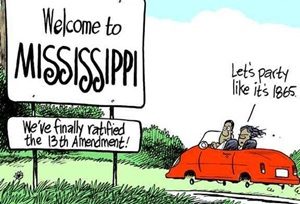
1865 – The United States Congress passed the Thirteenth Amendment (abolishing slavery) to the United States Constitution, and submitted it to the individual states for ratification.
It was ratified by the legislatures of 27 of the 36 states, including those that had been in rebellion) within eleven months, and was certified by Secretary of State William Seward as part of the Constitution on December 18, 1865.
In the months and years that followed, other states continued to ratify the amendment, including those that had initially rejected it. New Jersey and Iowa ratified the amendment in 1866, Texas in 1870, Delaware in 1901 and Kentucky in 1976.
But Mississippi? It only took that state until 1995, but because the state never officially notified the U.S. Archivist, the ratification was not official until 2013.
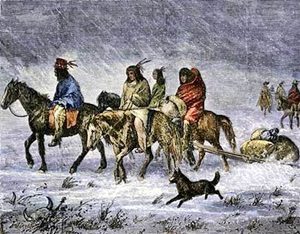
1876 – The United States ordered all Native Americans to move into reservations.
The hope of creating these reservations was to reduce clashes between the white settlers and the Natives. At first the Native American tribes were given land that they could use for agriculture, but eventually even this diminished as white settlers set their eyes on land that the Natives had received.
Enforcement of the policy required the United States Army to restrict the movements of various tribes. The pursuit of tribes in order to force them back onto reservations led to a number wars with Native Americans which included some massacres.
The most well-known conflict was the Sioux War on the northern Great Plains, between 1876 and 1881, which included the Battle of Little Bighorn.
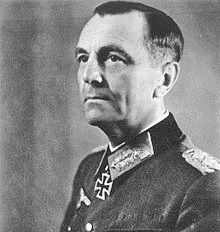
1943 – German Field Marshal Friedrich Paulus, defying direct orders from Adolf Hitler, surrendered to the Soviets at Stalingrad, followed 2 days later by the remainder of his Sixth Army, ending one of World War II’s fiercest and deadliest battles.
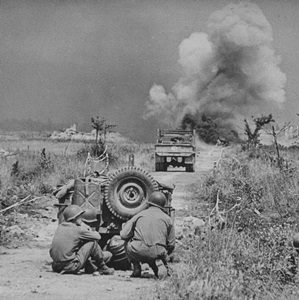
1944 – During the Anzio campaign the 1st and 3rd Ranger Battalions were destroyed behind enemy lines in a heavily outnumbered encounter at the Battle of Cisterna, Italy.
The 1st and 3rd Ranger Battalions – totaling 767 men and supported by a platoon of 43 men of the 3rd Reconnaissance Troop – attempted a night infiltration behind German lines into the town of Cisterna. Their objective was to seize the town in a surprise attack and hold it until the main attack came through.
They needed to cross open ground for the final portion of the approach, but were attacked by German forces of the 715th Infantry Division and Herman Goring Panzer Division, including at least seventeen German Panzer IV tanks.
Despite fierce fighting, there was little chance of success once the Rangers were attacked on the open ground. German units put Ranger prisoners in front of their tanks and commanded other Rangers to surrender.
After the approximately seven-hour battle, only six of the 767 Rangers and one member of the 3rd Recon troop returned to Allied lines, resulting in an overall loss of 803 men. The exact number of killed, wounded and captured is unknown, although U.S. Army records indicate over 700 Rangers were taken prisoners.
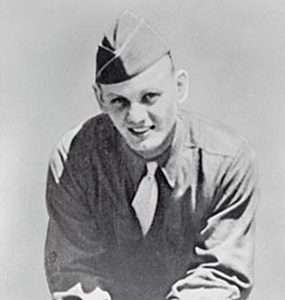
1945 – U.S. Army private Eddie Slovik was executed by firing squad for desertion, the first such execution of an American soldier since the Civil War.
He had deserted on October 9, 1944, just as his unit, the 28th Infantry Division, was about to go into the Hürtgen Forest, already known as a very dangerous place to be.
Slovik, claiming he “wasn’t cut out for combat,” was given several opportunities to rejoin his unit in exchange for the charges against him being dropped.
He also was offered a chance to transfer to a different infantry regiment in the division where no one would know of his past and he could start with a “clean slate.”
Slovik, still convinced that he would face only jail time, declined these offers, saying, “I’ve made up my mind. I’ll take my court martial.”
After being convicted and sentenced to death, Slovik wrote a letter to the Supreme Allied commander, General Dwight D. Eisenhower, pleading for clemency. Eisenhower, however, confirmed the execution order, noting that it was necessary to discourage further desertions.
Although over 21,000 American soldiers were given varying sentences for desertion during World War II, including forty-nine death sentences, Slovik’s sentence was the only one that was carried out.
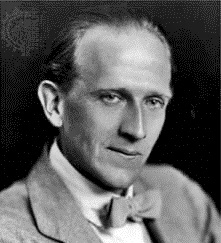
1956 – Author A.A. Milne died at the age of 74.
He was an established British author, poet and playwright long before the success of Winnie the Pooh in 1926 – and The House At Pooh Corner two years later – made him a household name throughout the world.
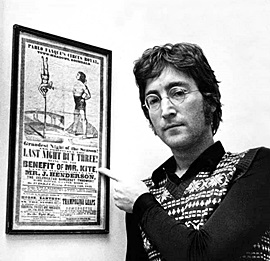
1967 – John Lennon bought a poster (and not just any poster).
While taking a break during the filming of the video for Strawberry Fields Forever, Lennon wandered into an antique shop and bought a poster announcing a circus near Richdale, Lancashire in February 1843.
The poster became the inspiration for Being For The Benefit Of Mr. Kite!

1970 – The Grateful Dead were arrested for possession of LSD and barbiturates in New Orleans.
The Dead, with Fleetwood Mac as openers, had just played the first of two nights at the Warehouse ballroom when they returned to their Bourbon Street hotel to find the police waiting for them, having already searched their rooms.
Nineteen members of the group’s touring party were arrested. While most of the charges were eventually dropped, the incident lived on in their music.
Nine months later, the group released Truckin’ whose lyrics famously referenced the arrest:
“Busted, down on Bourbon Street
Set up, like a bowlin’ pin
Knocked down, it gets to wearin’ thin
They just won’t let you be, no.”

1971 – Commander Alan Shepard, Command Module Pilot Stuart Roosa, and Lunar Module Pilot Edgar Mitchell blasted off aboard Apollo 14 on the third successful manned mission to the moon.
Shepard – the first American to travel into space – was the only one of the original Mercury Seven astronauts to reach the Moon.
He was also the only astronaut to play golf on the moon. He hit two golf balls on the lunar surface with a makeshift club he had brought with him.
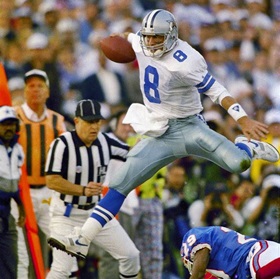
1993 – At Super Bowl XXVII, the Dallas Cowboys beat the Buffalo Bills, 52-17. Dallas quarterback Troy Aikman was selected as the game MVP.
It was the third consecutive Super Bowl loss for the Bills. They would make it 4 in a row the next year when they lost to Dallas again.
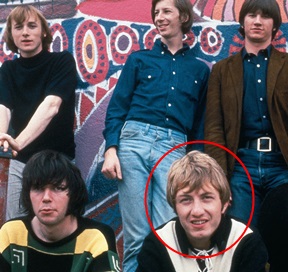
2009 – Drummer Dewey Martin died of natural causes at the age of 68.
As a member of Buffalo Springfield, he recorded For What It’s Worth (featuring one of the most iconic drum introduction lines ever recorded in American pop) and Mr. Soul.
Martin became the last member to join the legendary group at its founding. Along with Stephen Stills and Richie Furay, he was one of only three musicians to stay with the group from its inception in April 1966 to its disbandment in May 1968.
He was inducted into the Rock and Roll Hall of Fame with the rest of Buffalo Springfield in 1997.
If you’re new to these columns, I don’t post them on weekends but I always include significant events that took place as a bonus. Here is your bonus look at February 1 and 2.
ON FEBRUARY 1…
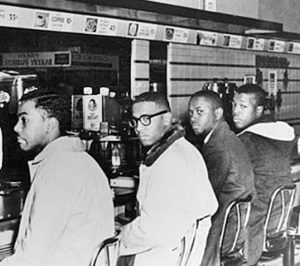
1960 – Four black college students staged a sit-in protest at a Woolworth lunch counter in Greensboro, N.C., where they’d been refused service.
The men – forever known as the Greensboro Four – had purchased products from a desegregated counter at the store with no problems, but were refused service at the store’s lunch counter when they each asked for a cup of coffee. Following store policy, staff refused to serve the black men at the “whites only” counter and store manager Clarence Harris asked them to leave.
They did not.
The next day, more than twenty black students, recruited from other campus groups, joined the sit-in. Students from Bennett College, a college for black women in Greensboro, also joined.
On the third day, more than 60 people came to the Woolworth store. A statement issued by Woolworth national headquarters said that the company would “abide by local custom” and maintain its segregation policy.
On the fourth day, more than 300 people took part, and by the seventh day, more black students launched their own protests in Winston-Salem, Durham, Raleigh, Charlotte, and out-of-state towns such as Lexington, Kentucky.
As the sit-ins continued, sales at the boycotted stores dropped by a third, leading their owners to abandon segregation policies.
On Monday, July 25, 1960, after nearly $200,000 in losses ($1.7 million today), store manager Clarence Harris asked three black employees to change out of their work clothes and order a meal at the counter. They were, quietly, the first to be served at a Woolworth lunch counter.
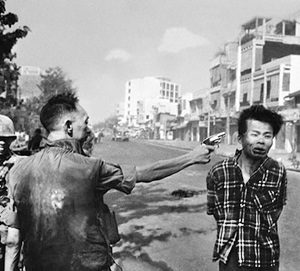
1968 – Two days after Vietcong and North Vietnamese forces launched the coordinated attacks of the Tet offensive, Eddie Adams, an Associated Press photographer captured police chief, Brig. Gen. Nguyen Ngoc Loan calmly executing prisoner, Nguyen Van Lem, a Viet Cong officer .
It was a shocking sight for Americans, who had been assured by President Lyndon B. Johnson and his top general in Vietnam, William C. Westmoreland, that the enemy was on its last legs.
The image gave Americans a stark glimpse of the brutality of the Vietnam War and helped fuel a decisive shift in public opinion.
The photo won AP photographer Eddie Adams the 1969 Pulitzer Prize for Spot News Photography, though he later regretted its impact.
Time magazine called it one of the 100 most influential photographs ever taken.
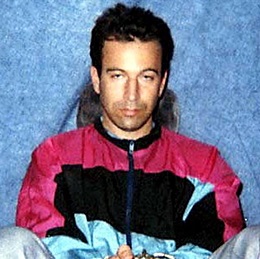
2002 – Journalist Daniel Pearl was beheaded and mutilated by his captors.
Pearl was the South Asia Bureau Chief of the Wall Street Journal, and had been kidnapped on January 23 by a militant group calling itself the National Movement for the Restoration of Pakistani Sovereignty.
The group claimed Pearl was a spy and sent the United States a range of demands, including the freeing of all Pakistani terror detainees, and the release of a halted U.S. shipment of F-16 fighter jets to the Pakistani government.
Nine days later, the terrorists beheaded Pearl. On May 16, his severed head and decomposed body were found cut into ten pieces, and buried, along with an identifying jacket, in a shallow grave.
On March 21, 2002, in Pakistan, Ahmed Omar Saeed Sheikh and three other suspects were charged with murder for their part in the kidnapping and murder of Pearl.
They were convicted on July 15, 2002, and Sheikh was sentenced to death. Sheikh has appealed the sentence. Hearings in his case have been postponed numerous times, and no definitive date has been set for his execution.
However…
On March 10, 2007, Khalid Sheikh Mohammed – an alleged Al Qaeda operative reported to be third in command under Osama bin Laden, mastermind of the September 11, 2001 attacks – claimed responsibility for the murder of Pearl.
“I decapitated with my blessed right hand the head of the American Jew Daniel Pearl, in the city of Karachi, Pakistan.”
The FBI has determined that the perpetrator in the grisly video of the killing of Pearl was most likely Mohammed, identifying him through a “bulging vein” running across his hand that was visible in the video.

From left (bottom row): Kalpana Chawla, mission specialist; Rick Husband, commander; Laurel Clark, mission specialist; and Ilan Ramon, payload specialist. From left (top row) are astronauts David Brown, mission specialist; William McCool, pilot; and Michael Anderson, payload commander.
2003 – Space shuttle Columbia broke up while entering the atmosphere over Texas, killing all seven crew members on board. When it launched on January 16, a piece of foam insulation broke off from the shuttle’s propellant tank and hit the edge of the shuttle’s left wing eighty seconds into the launch.
Engineers at the space agency realized the damage to the wing could cause a catastrophic failure, but their concerns were not addressed in the two weeks that Columbia spent in orbit because NASA management believed that even if major damage had been caused, there was little that could be done to remedy the situation.
Columbia reentered the earth’s atmosphere on the morning of February 1. At 8:53 a.m. – as the shuttle was 231,000 feet above the California coastline traveling at 23 times the speed of sound – the first indications of trouble began. Because the heat-resistant tiles covering the left wing’s leading edge had been damaged or were missing, wind and heat entered the wing and blew it apart.
The first debris began falling to the ground in west Texas near Lubbock at 8:58 a.m. One minute later, the last communication from the crew was heard, and at 9 a.m. the shuttle disintegrated over southeast Texas, near Dallas.
Residents in the area heard a loud explosion and saw streaks of smoke in the sky. Debris and the remains of the crew were found in more than 2,000 locations across East Texas, Arkansas and Louisiana. Making the tragedy even worse, two pilots aboard a search helicopter were killed in a crash while looking for debris.

2004 – Singer Janet Jackson’s breast was briefly exposed during the Super Bowl halftime show in Houston.
During the halftime show at Super Bowl XXXVI, Jackson performed a medley of hits before surprise guest Timberlake appeared onstage to perform a duet of his song Rock Your Body with her.
As Timberlake reached his final line (“I’m gonna have you naked by the end of this song”), he pulled off a part of Jackson’s costume; the move revealed Jackson’s right breast – partially covered by a piece of nipple jewelry – for less than a second, after which the CBS broadcast immediately cut to an aerial view of Reliant Stadium.
Following the performance, the Federal Communications Commission received over 500,000 complaints, CBS was fined $550,000 and the NFL was asked to refund the $7.5 million to AOL, the halftime show sponsor.
By the way, the New England Patriots defeated the Carolina Panthers 32-29 when Patriots kicker Adam Vinatieri kicked a 41-yard field goal with four seconds left.
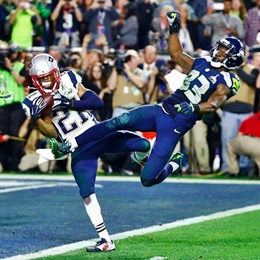
2015 – At Super Bowl XLIX in Glendale, AZ, the New England Patriots beat Seattle Seahawks, 28-24.
While New England QB Tom Brady won game MVP honors, many people thought the award should have gone to Malcolm Butler for his game saving interception (shown above) at the goal line with 20 seconds left.

2016 – It was the start of a campaign like no other in American history.
Former Secretary of State Hillary Clinton was able to defeat Sen. Bernie Sanders (VT) in the first-in-the-nation Iowa Democratic Caucus by the closest margin in the history of the contest: 49.8% to 49.6%.
At the Republican Caucuses, there was a crowded field of 12 candidates (more would join the fray as the primary season heated up). Sen. Ted Cruz (TX), with 27.6% of the caucus votes, defeated businessman Donald Trump (24.3%), and Sen. Marco Rubio (FL) had 23.12%. No other Republican was able to score in the double digits.
The “fun” was just beginning.
ON FEBRUARY 2…

1959 – For the admission price of $1.25, fans got to see Dion, Frankie Sardo, J.P. Richardson (the Big Bopper), Ritchie Valens and Buddy Holly perform at the Surf Ballroom in Clear Lake, Iowa.
Shortly after 1:00 am, Holly, Valens and Richardson were killed instantly when their plane crashed into a cornfield five miles northwest of the Mason City, Iowa airport just after takeoff.
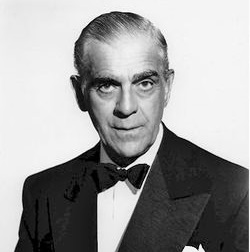
1969 – Actor Boris Karloff (Frankenstein series of films, The Mummy, and of course, his voice work in How The Grinch Stole Christmas) died from pneumonia at the age of 81.
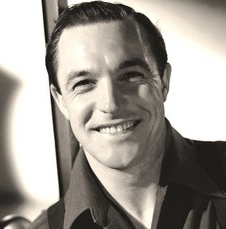
1996 – Actor Gene Kelly died following a series of strokes. He was 83.
He starred in An American In Paris, Anchors Aweigh, For Me And My Gal, Take Me Out To The Ballgame, and Singin’ In The Rain.

2014 – Actor Philip Seymour Hoffman died at the age of 51 from what was officially ruled an accident caused by “acute mixed drug intoxication, including heroin, cocaine, benzodiazepines and amphetamine.”
He starred in Boogie Nights, The Big Lebowski, Magnolia, The Talented Mr. Ripley, Scent Of A Woman, Charlie Wilson’s War, Doubt, The Master and was the winner of the Academy Award for Best Actor in Capote.
In addition to his magnificent film work (and I only scratched the surface above), his performances in three Broadway plays – True West, Long Day’s Journey Into Night, and Death of A Salesman – all led to Tony Award nominations.
He truly was, as described in his New York Times obituary, “perhaps the most ambitious and widely admired American actor of his generation.”
Compiled by Ray Lemire ©2020 RayLemire.com / Streamingoldies.com. All Rights Reserved.